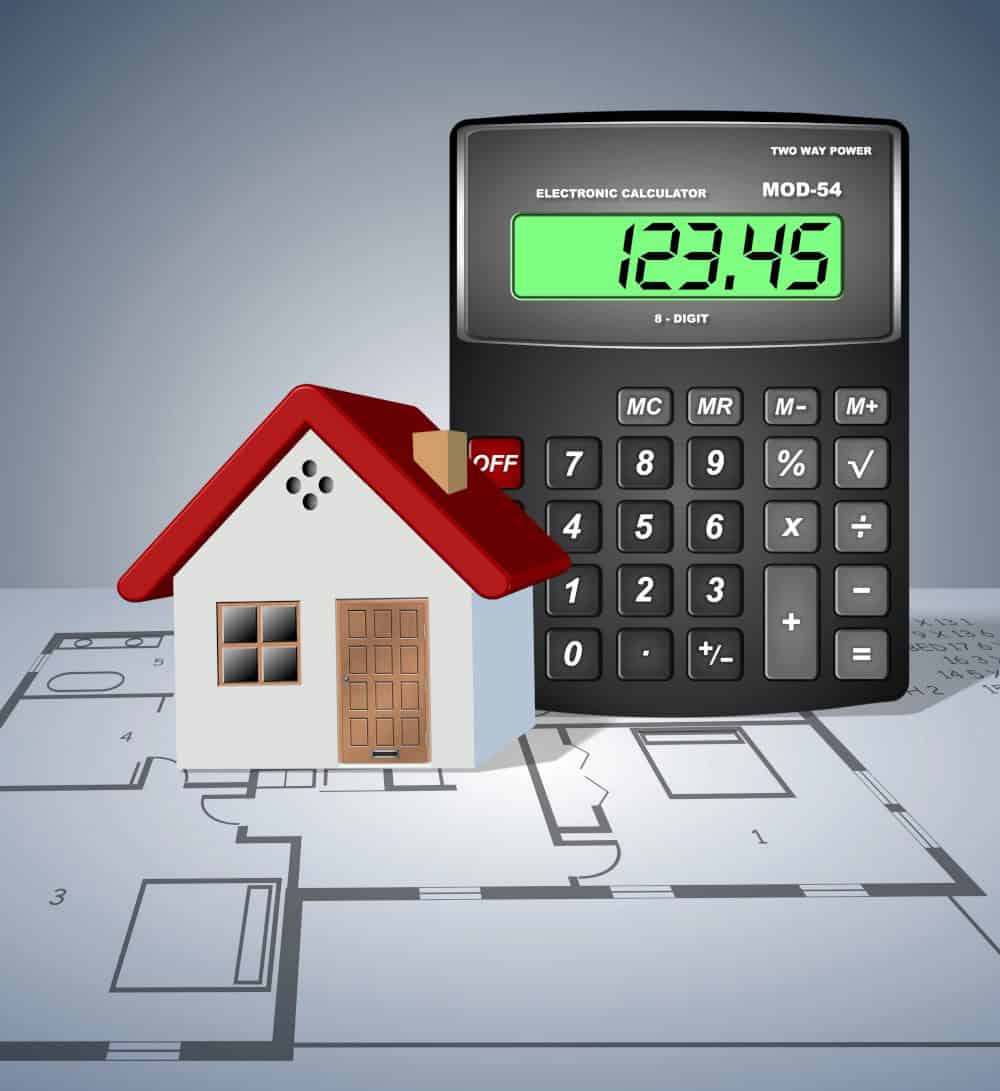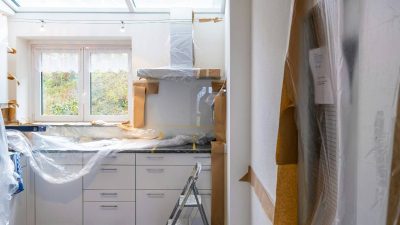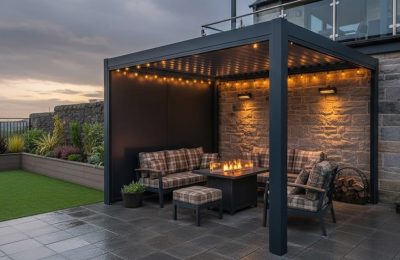Landlords in Scotland must ensure that their rental properties are kept in top condition to attract and retain quality tenants. Furnishing apartments, flats and houses before putting them on the market can be a tremendously beneficial way to maximise returns while providing tenants with a comfortable and safe place to live.
Of course, landlords face the challenge of determining whether a full renovation will be worth the investment in the long run. Renovations can yield positive results for both landlords and tenants, even considering the high costs of ownership and the flexibility of renting. That said, renovations can be disruptive, costly, and time-intensive, which is why landlords may opt for a room-by-room renovation rather than tackling the project all at once.

[Image source: Deposit photos]
In this article, we’ll explore the pros and cons of full or room-by-room property renovations to help you make an informed decision that aligns best with your specific property ownership situation.
Potential room improvements
Before deciding on whether to renovate your rental property one room at a time or all at once, it makes sense to pinpoint specific improvements. By assessing each room in detail, you can ascertain the extent of the furnishing or refurbishment project and make informed decisions about how you tackle this project.
Take the following ideas for suitable improvements for each room.
Bedrooms
- Applying new carpets or flooring to replace tired or faded panels and add more comfort underfoot.
- Adding fitted bedroom wardrobes and customised shelving to give tenants more storage space and flexibility than freestanding units.
- Updating windows and doors for added noise resistance and privacy, complemented by blackout curtains.
- Providing high-quality beds and furniture.
- Including fabrics like goose down duvets and pillows for added comfort and luxury in short-term rentals.
Living room
- Freshening up the wallpaper and filling holes and faded patches in walls and the ceiling.
- Adding new wallpaper and lighting fixtures with smart controls to give tenants more control over the ambience.
- Replacing and refinishing built-in shelving, cabinetry, and alcove storage.
- Updating living room flooring with soft carpet or luxury vinyl tiles (LVTs).
Kitchen
- Adding new appliances or replacing outdated ones with newer, energy-efficient models.
- Installing new cabinets and countertops (in granite, quartz, or laminate finishes) to modernise the space.
- Providing new tiles and flooring to complement a new modern or minimalist aesthetic.
- Knocking down walls to bring the kitchen closer to the rest of the property.
- Adding a breakfast bar or kitchen island with stools, if the space allows it.
Bathrooms
- Replacing outdated fixtures like toilets, sinks, baths, and showers with newer, aesthetically pleasing models.
- Installing new waterproof flooring and tiles to align with a new, modernised design.
- Updating ventilation and providing more incumbent lighting.
- Adding mirrored cabinets to provide more storage and enhance the feeling of space.
- Upgrading windows to maximise ventilation and natural light exposure.
Benefits of a full property renovation
Renovating the entire property in one go allows for more control over the entire interior design process. From materials to colour schemes and architectural elements, full renovations ensure that each room can be more consistent and cohesive, which can be particularly appealing to prospective tenants. Doing so, may even allow landlords to charge higher rental payments for high-end furnished properties.
While the upfront costs of a full home renovation may be higher than tackling it one room at a time, it could ultimately lead to better long-term cost savings and also improve the value of a home. Plumbing, electrical and insulation changes can improve the property’s overall longevity and reduce the need for lengthy, extensive repairs down the line.
Furthermore, a single, concentrated renovation period can minimise disruption to neighbours compared to multiple, intermittent projects of varying length. For properties in densely populated areas, flats or apartments, this can put you in better graces with neighbours than if you renovated room by room.
Benefits of renovating a house room by room
Renovating one room at a time provides more flexibility for landlords with a limited budget, with the project becoming more manageable financially. Spreading costs over longer periods means that cash flow can be better mitigated, and there is less of a need to make hefty upfront investments.
Full renovations usually require the property to be temporarily vacated, while a room-by-room approach generally allows tenants to stay put in some capacity. With your rental units still occupied, it allows landlords to achieve continuous rental income without that being disrupted. In turn, this can provide a cash flow boost meaning that renovations can be better funded over a longer stretch of time.
Renovating one room after another allows you to prioritise areas that require the most attention or those that cater to specific tenant needs. For example, starting with the bathroom or kitchen usually ticks many renters’ initial boxes when searching for rental properties, while other areas are less of a priority. As such, you may be able to secure tenants more efficiently if certain rooms are refurbished ahead of time.
Weighing the pros and cons
To help you decide which approach is best for your rental property, consider the following factors:
- Budget: Determine whether you can justify the upfront costs of a single renovation or whether smaller adjustments are more feasible.
- Property condition: If your property requires extensive work or has major structural issues, a full renovation may be more practical to address all problems decisively.
- Tenant occupancy: If the property is occupied, a room-by-room renovation may be the best option to minimise disruption and avoid temporary relocation.
- Timeframe: A full renovation can be completed more quickly, while a room-by-room approach may take longer but allows for greater flexibility.
Remember, when renovating a rental property in Scotland, it’s essential to comply with all relevant Scottish legislation and regulations, such as building codes, energy efficiency standards, and health and safety requirements. Whether you choose to renovate your rental property all at once or one room at a time, carefully weigh the benefits and drawbacks to determine the best course of action.









